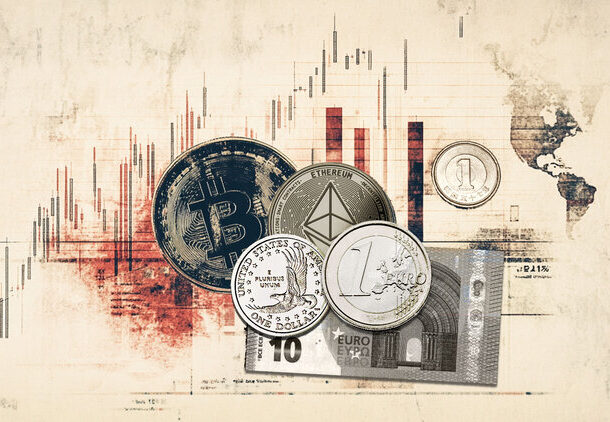
- USD/CHF edges lower to near 0.8135 in Tuesday’s early European session.
- The ongoing conflict between Israel and Iran boosts the safe-haven flows, benefiting the Swiss Franc.
- Traders await the US May Retail Sales data on Tuesday ahead of the Fed interest rate decision.
The USD/CHF pair softens to around 0.8135 during the early European session on Tuesday. The persistent geopolitical risks in the Middle East provide some support to the Swiss Franc (CHF) against the US Dollar (USD). Traders brace for the US Retail Sales data for May, which is due later on Tuesday.
The conflict between Israel and Iran has entered its fifth day despite world calls for negotiation and de-escalation. Late Monday, US President Donald Trump called for the evacuation of Iran’s capital Tehran, hours after urging the country’s leadership to accept a deal to limit its nuclear program, even though Israel indicated that attacks would continue. Heightened geopolitical tensions in the Middle East are likely to boost the safe-haven flows, supporting the CHF in the near term.
Nonetheless, any signs of easing geopolitical tensions might drag the CHF lower and act as a tailwind for the pair. There was some hope on Monday that the situation would not worsen when Iran reportedly asked many countries to put pressure on Israel for a ceasefire.
The US Federal Reserve (Fed) interest rate decision will take center stage on Wednesday, which is expected to keep interest rates steady at its June meeting. Futures markets expect two rate cuts by year-end, possibly beginning in September, bolstered by softer inflation data last week.
Traders will take more cues from the FOMC Press Conference. “If the Fed delivers a dovish hold as we expect, the dollar is likely to resume weakening due to the worsening fundamental backdrop in the U.S,” said Win Thin, global head of markets strategy at Brown Brothers Harriman.
Swiss Franc FAQs
The Swiss Franc (CHF) is Switzerland’s official currency. It is among the top ten most traded currencies globally, reaching volumes that well exceed the size of the Swiss economy. Its value is determined by the broad market sentiment, the country’s economic health or action taken by the Swiss National Bank (SNB), among other factors. Between 2011 and 2015, the Swiss Franc was pegged to the Euro (EUR). The peg was abruptly removed, resulting in a more than 20% increase in the Franc’s value, causing a turmoil in markets. Even though the peg isn’t in force anymore, CHF fortunes tend to be highly correlated with the Euro ones due to the high dependency of the Swiss economy on the neighboring Eurozone.
The Swiss Franc (CHF) is considered a safe-haven asset, or a currency that investors tend to buy in times of market stress. This is due to the perceived status of Switzerland in the world: a stable economy, a strong export sector, big central bank reserves or a longstanding political stance towards neutrality in global conflicts make the country’s currency a good choice for investors fleeing from risks. Turbulent times are likely to strengthen CHF value against other currencies that are seen as more risky to invest in.
The Swiss National Bank (SNB) meets four times a year – once every quarter, less than other major central banks – to decide on monetary policy. The bank aims for an annual inflation rate of less than 2%. When inflation is above target or forecasted to be above target in the foreseeable future, the bank will attempt to tame price growth by raising its policy rate. Higher interest rates are generally positive for the Swiss Franc (CHF) as they lead to higher yields, making the country a more attractive place for investors. On the contrary, lower interest rates tend to weaken CHF.
Macroeconomic data releases in Switzerland are key to assessing the state of the economy and can impact the Swiss Franc’s (CHF) valuation. The Swiss economy is broadly stable, but any sudden change in economic growth, inflation, current account or the central bank’s currency reserves have the potential to trigger moves in CHF. Generally, high economic growth, low unemployment and high confidence are good for CHF. Conversely, if economic data points to weakening momentum, CHF is likely to depreciate.
As a small and open economy, Switzerland is heavily dependent on the health of the neighboring Eurozone economies. The broader European Union is Switzerland’s main economic partner and a key political ally, so macroeconomic and monetary policy stability in the Eurozone is essential for Switzerland and, thus, for the Swiss Franc (CHF). With such dependency, some models suggest that the correlation between the fortunes of the Euro (EUR) and the CHF is more than 90%, or close to perfect.
Information on these pages contains forward-looking statements that involve risks and uncertainties. Markets and instruments profiled on this page are for informational purposes only and should not in any way come across as a recommendation to buy or sell in these assets. You should do your own thorough research before making any investment decisions. FXStreet does not in any way guarantee that this information is free from mistakes, errors, or material misstatements. It also does not guarantee that this information is of a timely nature. Investing in Open Markets involves a great deal of risk, including the loss of all or a portion of your investment, as well as emotional distress. All risks, losses and costs associated with investing, including total loss of principal, are your responsibility. The views and opinions expressed in this article are those of the authors and do not necessarily reflect the official policy or position of FXStreet nor its advertisers. The author will not be held responsible for information that is found at the end of links posted on this page.
If not otherwise explicitly mentioned in the body of the article, at the time of writing, the author has no position in any stock mentioned in this article and no business relationship with any company mentioned. The author has not received compensation for writing this article, other than from FXStreet.
FXStreet and the author do not provide personalized recommendations. The author makes no representations as to the accuracy, completeness, or suitability of this information. FXStreet and the author will not be liable for any errors, omissions or any losses, injuries or damages arising from this information and its display or use. Errors and omissions excepted.
The author and FXStreet are not registered investment advisors and nothing in this article is intended to be investment advice.
Editors’ Picks

EUR/USD treads water above 1.1550, receives support from ECB-Fed policy divergence
EUR/USD holds ground for the second successive session, trading around 1.1560 during the Asian hours on Tuesday. The pair maintains its position near 1.1631, the highest since October 2021, reached on June 12. The Euro receives support from improved risk sentiment amid decreasing concerns of escalating tensions between Israel and Iran.

USD/JPY stays below 145.00 after BoJ maintains status quo
USD/JPY recovers from session lows but remains below 145.00 after the Bank of Japan (BoJ) left the policy rate unchanged at 0.5%. In the post meeting press conference, BoJ Governor Ueda reiterated that the timing of the rate hike will depend on the likelihood of achieving the price outlook.

The Best brokers to trade EUR/USD
SPONSORED Discover the top brokers for trading EUR/USD in 2025. Our list features brokers with competitive spreads, fast execution, and powerful platforms. Whether you’re a beginner or an expert, find the right partner to navigate the dynamic Forex market.








